Sauna and Headaches: Does Heat Therapy Trigger or Relieve Pain?
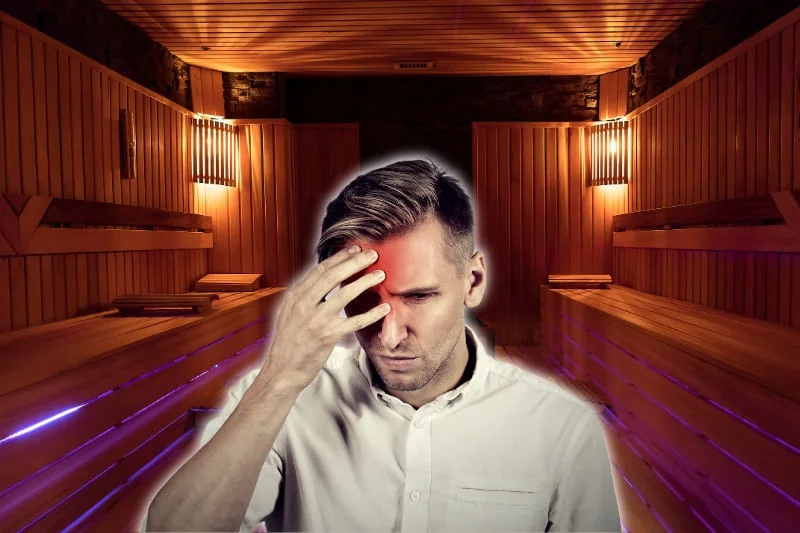
Have you ever stepped out of a relaxing sauna only to be hit with a pounding headache? Or maybe you’ve heard that saunas can actually help relieve chronic headaches?
Key Takeaways
- Dehydration is the primary cause of sauna-induced headaches, with research showing it reduces blood volume and brain oxygen.
- Traditional Finnish saunas operate at 176-212°F and may cause more headaches than infrared saunas (104-140°F).
- Clinical research shows regular sauna use can reduce pain intensity by 44% in chronic tension headache sufferers.
- Optimal sauna sessions should last 10-15 minutes for beginners and no more than 20 minutes for experienced users.
- Proper hydration before, during, and after sauna use is critical for sauna headache prevention.
- Underlying medical conditions like hypertension may increase sauna headache risk.
The relationship between sauna and headaches is fascinating but complex. For some people, saunas trigger painful headaches, while for others, they provide blessed relief from chronic pain.
According to a groundbreaking study from the Wellington Pain & Headache Clinic, regular sauna sessions reduced headache intensity by 44% in chronic sufferers. Yet approximately 30% of regular sauna users report occasional headache symptoms after sessions.
This article breaks down the science behind why saunas can both cause and cure headaches and provides practical strategies to make your sauna experience pain-free.
Table of Contents
DISCLAIMER: The information provided in this article is for educational purposes only and is not intended as medical advice. Always consult with a qualified healthcare professional before starting any new health regimen, including the use of saunas.
Understanding Sauna-Induced Headaches: Why They Happen
To prevent and treat headaches that occur after sauna use, we first need to understand the specific physiological mechanisms at play. The extreme heat environment creates several distinct changes in your body that can lead to head pain.
Dehydration: The Main Culprit
Excessive sweating during sauna sessions leads to rapid fluid loss, making dehydration the most common cause of headaches after sauna use. Research shows that even mild dehydration reduces blood volume, causing the brain to temporarily contract and pull away from the skull, activating pain-sensitive nerves.
When you sweat profusely in a sauna, your body loses both water and essential electrolytes, including:
- Sodium loss – affects nerve function and fluid balance
- Potassium loss – impacts muscle contractions and heart rhythm
- Magnesium loss – can trigger headaches and muscle cramps
These mineral imbalances from electrolyte loss sauna sessions can trigger or worsen headaches, especially if you were already somewhat dehydrated before entering.
Blood Pressure and Circulatory Changes
Sauna blood pressure effects are dramatic and can contribute to headaches.
Research published in the European Journal of Applied Physiology found that during a 25-minute sauna session at 93°C, both systolic and diastolic blood pressure increase progressively, accompanied by a steady rise in heart rate.1
After leaving the sauna, blood pressure often drops significantly below baseline levels. These rapid fluctuations in blood pressure can trigger headaches in susceptible individuals, especially those with pre-existing cardiovascular conditions.

Brain Blood Flow Reduction
Perhaps most concerning, research has found that brain oxygen flow decreases dramatically during traditional sauna sessions.
A study published in the Journal of Physiology found that cerebral blood flow decreased by 30% during sauna exposure while simultaneously increasing intracranial pressure by 18%.2
This combination of reduced brain blood flow with increased pressure inside the skull creates ideal conditions for headache development. The study concluded that saunas pose “a greater challenge to the brain under mild to severe heating due to lower blood flow but similarly increased intracranial pressure.”
Heat Exhaustion Risk
Staying too long in a sauna can lead to heat exhaustion, a condition where your body overheats and struggles to cool itself. Common sauna heat exhaustion symptoms include:
- Throbbing headache
- Dizziness and confusion
- Nausea or vomiting
- Rapid heartbeat
- Fatigue and weakness
Heat exhaustion-related headaches typically feel more severe than simple dehydration headaches and may be accompanied by these additional symptoms.
Traditional vs. Infrared: Which Causes More Headaches?
The type of sauna you use can significantly impact your likelihood of developing a headache. Understanding the differences between sauna types helps explain why.
Traditional Finnish Saunas
Traditional Finnish sauna headaches are more common because these saunas:
- Operate at very high temperatures (176-212°F/80-100°C)
- Heat the air around you rather than your body directly
- Create a harsher environment that’s harder to tolerate
- Cause more rapid sweating and fluid loss
The extreme heat causes more dramatic cardiovascular responses, including the 30% reduction in cerebral blood flow mentioned earlier, which increases headache risk.
Infrared Saunas
Infrared sauna headache occurrence is generally lower because:
- They operate at lower temperatures (104-140°F/40-60°C)
- Heat your body directly using infrared radiation rather than heating the air
- Cause less cardiovascular strain
- May allow longer sessions with less dehydration
Research suggests that the gentler nature of infrared saunas makes them more suitable for headache-prone individuals and possibly even beneficial for headache treatment.
Steam Rooms
Steam room headache risk falls somewhere between traditional and infrared saunas.
The high humidity (nearly 100%) can make breathing more difficult for some users, potentially contributing to headache development through oxygen deprivation. However, the temperatures are typically lower than traditional dry saunas.
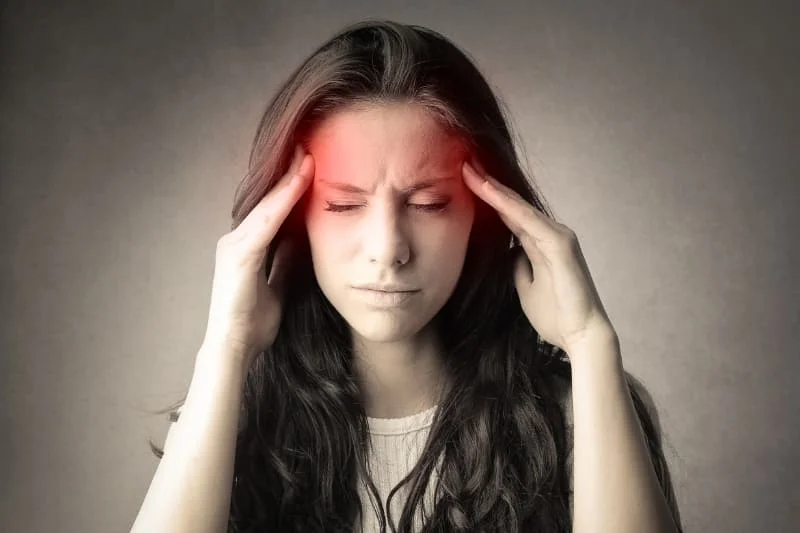
Can Saunas Actually Help with Headaches?
While saunas trigger headaches in some people, scientific evidence shows they can actually relieve headache pain for others. This apparent contradiction makes sense when we examine different headache types and the physiological effects of heat therapy.
Clinical Evidence for Tension Headache Relief
The strongest evidence for sauna for tension headaches comes from a randomized controlled study conducted by the Wellington Pain & Headache Clinic in New Zealand. This research found that regular sauna bathing significantly reduced headache pain intensity in patients with chronic tension-type headache (CTTH).
The study involved 37 participants who used traditional saunas regularly for 8 weeks. Results showed:
- 44% reduction in headache intensity
- Statistically significant mean difference of 1.27 points on pain scales (p=0.002)
- Benefits from just 15-20 minute sessions at 80°C (176°F)
Researchers concluded that “regular sauna bathing is a simple, self-directed treatment that is effective for reducing headache pain intensity in CTTH”.3
How Heat Therapy Helps Certain Headaches
Heat therapy for headaches works through several mechanisms:
- Muscle relaxation – Heat reduces muscle tension, particularly in the neck and shoulders, which can trigger or worsen tension headaches
- Vasodilation benefits – The sauna vasodilation headache connection works both ways; while vasodilation can trigger migraines in some, it can relieve pressure-type headaches in others
- Endorphin release – Sauna endorphin release acts as a natural pain reliever, similar to the “runner’s high” experienced during exercise
- Stress reduction – Sauna stress reduction lowers cortisol levels, which can prevent stress-triggered headaches
- Improved circulation – Better blood flow can help deliver oxygen and nutrients to tissues, potentially reducing headache frequency
Potential for Migraine Management
While evidence for sauna for migraine prevention is less robust than for tension headaches, some research suggests potential benefits. Infrared saunas, in particular, may help with migraines due to their gentler nature and lower operating temperatures.
WebMD notes that infrared saunas may reduce headache frequency by alleviating muscle tension and improving cerebral blood flow.
Preventing Sauna-Induced Headaches: Complete Guide
If you enjoy saunas but want to avoid the post-sauna headache treatment hassle, follow these evidence-based prevention strategies.
Hydration Protocol
Proper hydration is the single most important factor for preventing headaches:
- Before sauna: Drink 16-20 ounces of water 1-2 hours before your session
- During sauna: Sip water throughout (keep a water bottle handy)
- After sauna: Drink at least 16-24 ounces within 30 minutes of finishing
Avoid diuretic drinks like alcohol, coffee, and caffeinated teas before sauna use, as these increase dehydration risk. Research shows that caffeine and alcohol can compound fluid loss and worsen headache symptoms.

Electrolyte Replacement
Simply drinking water isn’t enough to replace the electrolyte loss caused by sauna sessions. Consider:
- Sports drinks with electrolytes
- Banana after sauna for potassium
- Salty snacks after sauna to replace sodium
- Magnesium-rich foods like nuts or supplements
Commercial electrolyte tablets or powders mixed with water provide a convenient option to maintain mineral balance.
Optimal Session Duration and Temperature
Adjust your sauna session duration based on your experience level:
- Beginners: 5-10 minutes
- Regular users: 10-15 minutes
- Experienced users: 15-20 minutes maximum
Research indicates that the ideal optimal sauna temperature for therapeutic benefits without excessive headache risk is:
- Traditional saunas: 176°F (80°C)
- Infrared saunas: 122-140°F (50-60°C)
Studies comparing physiological responses at different temperatures found that 176°F (80°C) sessions produced beneficial psychological effects (increased vigor, decreased tension), while 248°F (120°C) exposure had opposite effects and increased adverse event risk.4
Cooling Down Properly
Rapid temperature changes can trigger headaches through blood vessel constriction/dilation. Follow these cooling down after sauna guidelines:
- Exit the sauna and sit in a room-temperature area for 5-10 minutes
- Take a lukewarm shower after sauna – not cold
- Avoid abrupt temperature transitions like jumping into cold water immediately
- Allow your heart rate and blood pressure to normalize gradually
Gradual cooling helps stabilize blood circulation and prevents persistent headaches.
Treating a Headache After Sauna: Quick Solutions
If prevention fails and you develop a headache after your sauna session, try these post-sauna headache treatment strategies:
1. Immediate Rehydration
- Drink 16-24 ounces of water immediately
- Include electrolytes (sports drinks or electrolyte tablets)
- Continue sipping fluids for several hours
- Monitor your urine color – it should return to pale yellow
2. Gentle Cooling
- Apply a cool compress headache relief to your forehead, neck, or temples
- Rest in a moderately cool, quiet room
- Avoid bright lights, which can worsen headaches
- Don’t shock your system with ice-cold treatments
3. Rest and Recovery
- Lie down in a quiet, dimly lit room
- Close your eyes and practice deep breathing
- Allow 20-30 minutes for your body to rebalance
- Try gentle neck stretches if tension is contributing to your headache
4. Pain Relief Options

If the headache persists:
- Try over-the-counter pain relievers like ibuprofen or acetaminophen after sauna
- Follow recommended dosage instructions
- Be aware that some medications may be less effective if you’re dehydrated
- If headaches are severe or persistent, consult a healthcare provider
Medical Considerations: When to Be Cautious
Certain medical conditions increase your risk of developing sauna-related headaches and may constitute sauna contraindications.
Pre-existing Conditions
People with these pre-existing conditions should be extra cautious:
- Hypertension (high blood pressure)
- History of migraines or cluster headaches
- Cardiovascular disease
- Low blood pressure (hypotension)
- Diabetes (due to blood sugar fluctuations)
- Dehydration-prone conditions
According to Brown Health University, people with unstable angina, recent heart attacks, or uncontrolled hypertension should avoid saunas entirely.
Warning Signs Requiring Medical Attention
Exit the sauna immediately and seek medical help if you experience:
- Sudden, severe headache, unlike previous headaches
- Confusion or disorientation
- Slurred speech or difficulty speaking
- Fainting or feeling like you might faint
- Chest pain or difficulty breathing
- Persistent vomiting
Using Saunas Therapeutically for Headache Management
For those seeking sauna headache relief, here’s how to maximize therapeutic benefits while minimizing risks.
Clinical Protocols
Based on the Wellington Pain & Headache Clinic study, here’s an effective protocol for using sauna for headache relief:
- Frequency: 4-7 sessions weekly
- Duration: 15-20 minutes per session
- Temperature: 176°F (80°C) in traditional saunas
- Therapeutic course: 8 weeks minimum for measurable results
This regimen reduced headache intensity by 44% in clinical studies [Kanji et al. (2015)].
For migraine sufferers, infrared saunas may be preferable:
- Frequency: 3-4 sessions weekly
- Duration: 10-15 minutes initially, progressing to 20-30 minutes
- Temperature: 122-140°F (50-60°C)
Positioning and Techniques
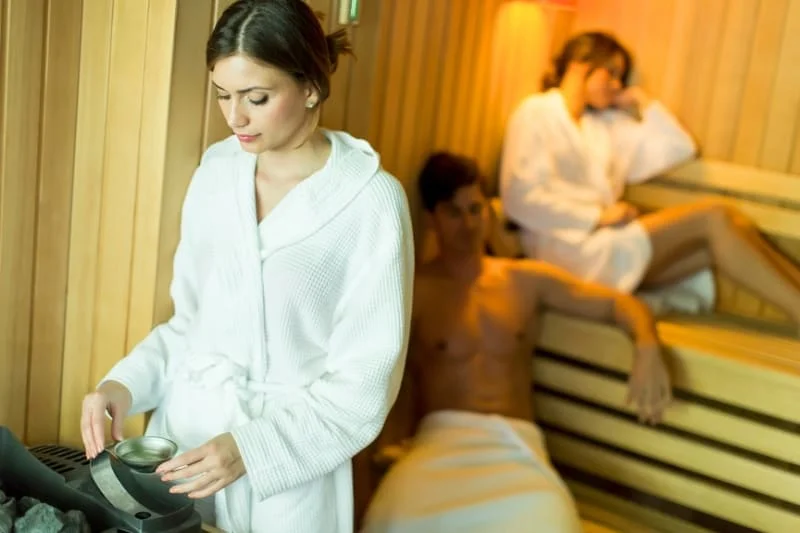
Proper positioning in the sauna can enhance headache relief:
- Use a neck support to maintain proper alignment
- Sit in a semi-reclined position when possible
- Keep your head slightly elevated to minimize blood pressure changes
Sauna breathing techniques can also help:
- Practice slow, deep breathing through your nose
- Aim for 6-8 breaths per minute
- Exhale completely to promote relaxation
- Consider adding sauna aromatherapy with essential oils like lavender or peppermint
Complementary Practices
Enhance sauna benefits with these practices:
- Gentle neck stretches before and after sessions
- Light massage of temples and neck during cooling periods
- Meditation or mindfulness during sauna use to reduce stress
- Cool compress headache relief applied to the forehead between sauna rounds
Special Considerations for Different Sauna Users
Different populations have unique needs when it comes to sauna use and headache prevention.
Athletes and Regular Exercisers
If you’re using saunas as part of your fitness routine:
- Never use a sauna when already dehydrated from exercise
- Wait at least 10 minutes after intense workouts before entering
- Replenish electrolytes lost during both exercise and sauna
- Consider infrared saunas, which may be gentler on the cardiovascular system
- Longer recovery periods may be needed between sauna after workout sessions
First-Time Users
New to saunas? Follow these sauna beginner tips:
- Start with just 5 minutes
- Choose lower temperatures for the first sessions
- Exit immediately if you feel uncomfortable
- Try infrared before traditional saunas
- Consider using a sauna timer to avoid overstaying
- Always go with someone experienced
Migraine Sufferers

If you have a history of migraines:
- Consult your doctor before trying sauna therapy
- Be aware that heat can be a migraine trigger for some
- Start with very brief, low-temperature sessions
- Exit at the first sign of aura or prodromal symptoms
- Consider infrared saunas, which operate at lower temperatures
- Track your response in a headache diary to identify patterns
Conclusion
Sauna and headaches have a dual relationship – the same heat therapy that triggers pain in some people relieves it in others.
Research proves saunas can reduce headache intensity by 44% for chronic tension sufferers, yet the physiological stress (30% decreased brain blood flow and increased pressure) explains why post-sauna headaches happen for many.
Stay headache-free by implementing proper hydration, replacing electrolytes, keeping sessions under 20 minutes, and cooling down gradually. If you’re prone to headaches, try infrared saunas instead of traditional Finnish ones for a gentler experience with similar benefits.
Understanding this science lets you customize your sauna experience to prevent pain while maximizing relief based on your unique physiology.
Resources
- Ketelhut, S., & Ketelhut, R. G. (2019). The blood pressure and heart rate during sauna bath correspond to cardiac responses during submaximal dynamic exercise. Complementary therapies in medicine, 44, 218–222. https://doi.org/10.1016/j.ctim.2019.05.002 ↩︎
- Gibbons, T. D., Ainslie, P. N., Thomas, K. N., Wilson, L. C., Akerman, A. P., Donnelly, J., Campbell, H. A., & Cotter, J. D. (2021). Influence of the mode of heating on cerebral blood flow, non-invasive intracranial pressure and thermal tolerance in humans. The Journal of physiology, 599(7), 1977–1996. https://doi.org/10.1113/JP280970 ↩︎
- Kanji, G., Weatherall, M., Peter, R., Purdie, G., & Page, R. (2015). Efficacy of regular sauna bathing for chronic tension-type headache: a randomized controlled study. Journal of alternative and complementary medicine (New York, N.Y.), 21(2), 103–109. https://doi.org/10.1089/acm.2013.0466 ↩︎
- Podstawski, R., Borysławski, K., Józefacka, N. M., Snarska, J., Hinca, B., Biernat, E., & Podstawska, A. (2024). The influence of extreme thermal stress on the physiological and psychological characteristics of young women who sporadically use the sauna: practical implications for the safe use of the sauna. Frontiers in public health, 11, 1303804. https://doi.org/10.3389/fpubh.2023.1303804 ↩︎

Grab Your “FREE” Sauna E-book NOW!
“Become a Sauna Expert Overnight!”
Get your hands on the ultimate sauna manual. From history to DIY setups, our free guide has it all.

As a Chartered Accountant turned sauna enthusiast, I bring a unique blend of analytical skills and hands-on experience to the world of heat therapy. With over a decade dedicated to researching and testing sauna products and practices, I’ve developed a deep understanding of this field. A the founder of HomeInDepth.com, I provide reliable, easy-to-understand information on all aspects of saunas. My goal is to guide you through every step of your sauna journey, offering meticulously researched, unbiased advice to help you make informed decisions and create your perfect sauna experience. I’m always happy to hear from sauna lovers like you—feel free to leave questions or share your own tips in the comments below so we can learn together. Contact me on:

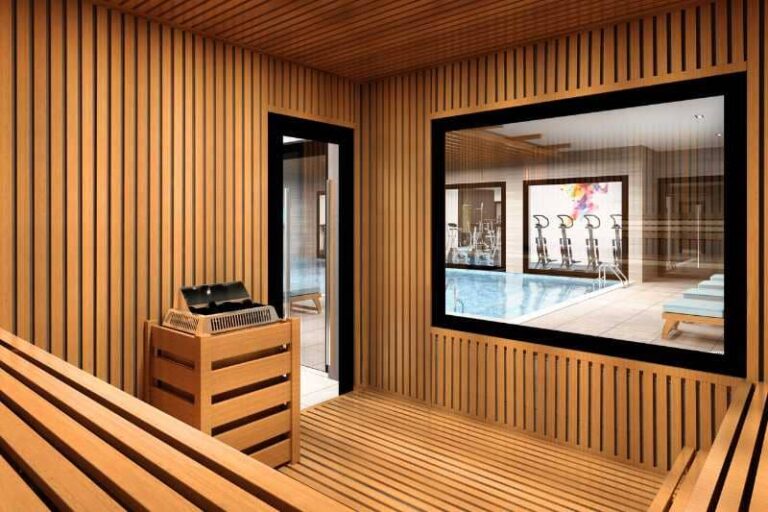

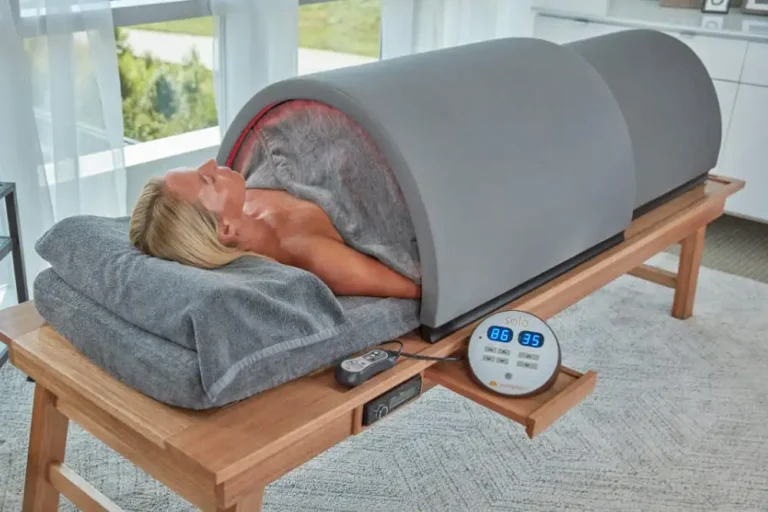

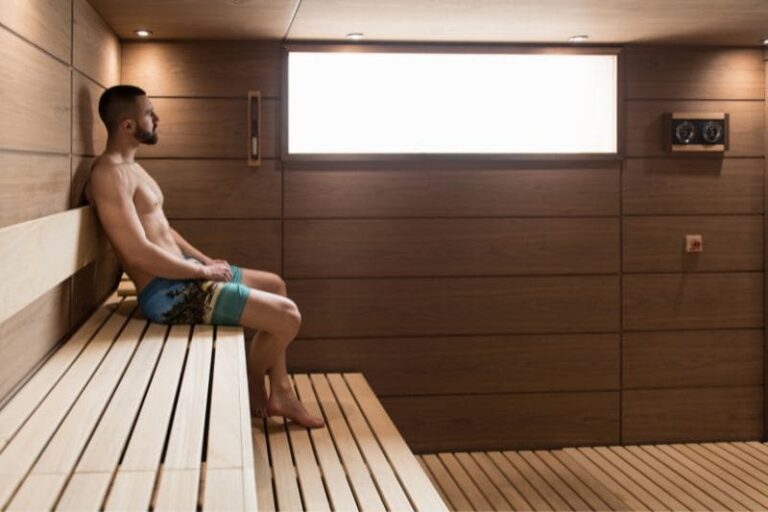

One Comment